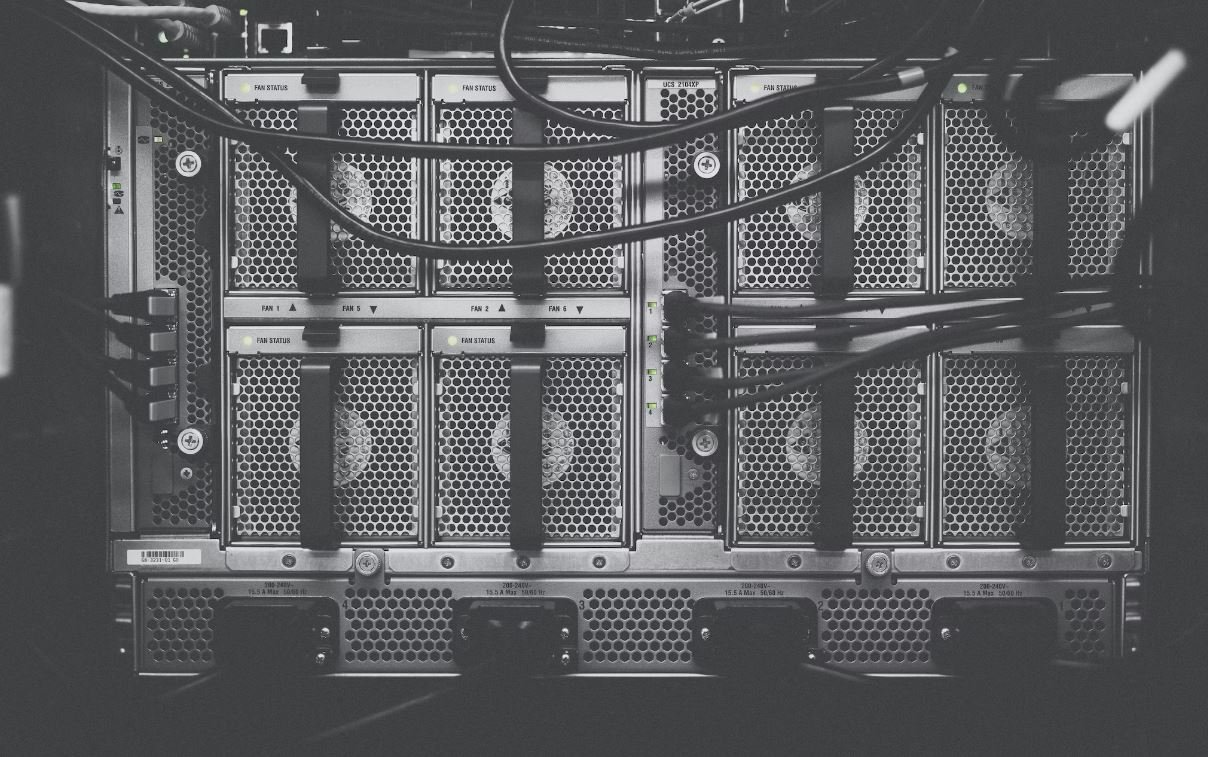Can Neuralink Cure ALS?
Neuralink, the brain-machine interface company founded by Elon Musk, has been making headlines with its ambitious goal of merging human brains with artificial intelligence. While the technology is still in its early stages, there is hope that it might offer potential treatments for neurodegenerative diseases like ALS (Amyotrophic Lateral Sclerosis), also known as Lou Gehrig’s disease.
Key Takeaways:
- Neuralink is a brain-machine interface company that aims to merge human brains with artificial intelligence.
- ALS is a complex neurodegenerative disease that leads to the loss of muscle control.
- Neuralink could potentially offer treatment options for ALS by restoring communication between the brain and muscles.
The Hope for ALS Patients
ALS is a progressive disease that affects nerve cells in the brain and spinal cord. It leads to the degeneration of motor neurons, resulting in the loss of muscle control and eventually paralysis. Currently, there is no known cure for ALS, and the available treatments only slow down the progression of the disease.
One of the main challenges in treating ALS is the disruption of communication between the brain and the muscles. This is where Neuralink offers potential hope. By developing a brain-machine interface that can bypass the damaged neurons and restore communication, Neuralink could potentially improve the quality of life for ALS patients and slow down the progression of the disease.
*Neuralink’s technology has the potential to change the landscape of ALS treatment by revolutionizing the way the brain interacts with the body.*
A potential treatment option offered by Neuralink involves implanting tiny electrodes into the brain, which can detect and interpret electrical signals. These signals can then be used to control external devices, such as prosthetic limbs or computers, effectively restoring mobility for patients with ALS.
The Challenges Ahead
While the idea of using brain-machine interfaces to treat ALS is promising, there are several challenges that need to be overcome. One major challenge is the implantation process itself. Implanting electrodes into the brain is a delicate and risky procedure that requires precise positioning to ensure optimal functionality and minimize the risk of complications.
*The success of Neuralink’s technology hinges not only on its effectiveness in restoring communication but also on the safety and reliability of the implantation process.*
Another challenge lies in the long-term stability of the electrodes. Over time, the electrodes might degrade or become less efficient, requiring regular maintenance or even replacement. Ensuring the longevity and durability of the implants will be crucial for the success of Neuralink’s technology in treating ALS.
Unveiling the Potential
While Neuralink’s brain-machine interface shows promise in offering potential treatments for ALS, it is important to acknowledge that the technology is still in its early stages of development. Extensive research and clinical trials are needed to validate its efficacy and safety.
*The merging of human brains with artificial intelligence is a field of exploration that holds immense possibilities, but it requires careful study and validation.*
However, the progress made by Neuralink so far has sparked optimism among the scientific and medical communities. The potential to restore communication between the brain and muscles offers a glimmer of hope for ALS patients and their families.
Conclusion
In conclusion, Neuralink’s brain-machine interface technology holds promise in offering potential treatment options for ALS. By restoring communication between the brain and muscles, it has the potential to improve the quality of life for ALS patients and slow down the progression of the disease. However, further research and validation are required before we can fully understand the capabilities and limitations of this technology.

Common Misconceptions
Misconception: Neuralink can fully cure ALS
- Neuralink is a promising technology, but it is not a cure for ALS.
- While Neuralink may offer potential benefits for people with ALS, it cannot completely reverse the effects of the disease.
- ALS is a complex neurodegenerative disease with multiple underlying causes, and a single technology like Neuralink cannot address all of them.
Misconception: Neuralink can restore full motor function in people with ALS
- While Neuralink can potentially improve motor function in people with ALS, it cannot restore full motor function.
- Motor function loss in ALS is caused by the progressive degeneration of motor neurons, and Neuralink cannot reverse this process.
- Neuralink may be able to provide alternative means of communication or control for individuals who have lost their ability to speak or move, but it cannot fully restore their previous level of motor function.
Misconception: Neuralink is a guaranteed solution for ALS
- Neuralink is an experimental technology that is still under development, and its effectiveness for ALS treatment is not yet fully known.
- While early studies and animal trials have shown promising results, further research and testing are needed to determine the long-term safety and efficacy of Neuralink for ALS patients.
- There are other approaches and therapies being explored for treating ALS, and Neuralink is just one potential avenue among many.
Misconception: Neuralink can be implemented immediately for ALS patients
- Neuralink is a complex and invasive technology that requires surgical implantation of electrodes into the brain.
- Before Neuralink can be used for ALS patients, it would need to undergo extensive testing, clinical trials, and regulatory approval.
- Even if Neuralink proves to be effective for ALS, it would likely take several more years before it becomes widely available for patient use.
Misconception: Neuralink is the only hope for ALS patients
- While Neuralink presents a potential new avenue for ALS treatment, it is not the only hope for patients.
- There are other ongoing research efforts, drug therapies, and supportive treatments that can help manage the symptoms and improve the quality of life for people with ALS.
- Neuralink should be viewed as a complementary approach that may offer additional options for individuals living with ALS, but it should not overshadow other available treatments.

The Current State of ALS
Amyotrophic lateral sclerosis (ALS), often referred to as Lou Gehrig‘s disease, is a progressive neurodegenerative disease that affects nerve cells in the brain and spinal cord. ALS leads to the loss of muscle control, causing difficulties in speech, swallowing, and breathing. Currently, there is no cure for ALS, and the available treatment options only provide limited relief. However, recent advancements in technology, such as Neuralink, offer hope for potential breakthroughs in treating this devastating condition.
Table: ALS Prevalence by Country
The table below highlights the prevalence of ALS across different countries worldwide:
| Country | No. of ALS Cases per 100,000 people |
|---|---|
| United States | 1-2 |
| United Kingdom | 2.2 |
| Australia | 1.9 |
| Japan | 2.4 |
| Canada | 2.7 |
Table: Neuralink’s Potential Applications
Neuralink, a brain-machine interface company founded by Elon Musk, aims to merge human cognition with artificial intelligence. Here are some potential applications of Neuralink technology:
| Applications | Description |
|---|---|
| ALS Treatment | Potential to restore motor function in ALS patients |
| Brain-Computer Interfaces | Improved communication for individuals with paralysis |
| Memory Enhancement | Aid for memory disorders and cognitive disabilities |
| Mental Health | Potential treatment for depression and anxiety disorders |
Table: Neuralink’s Prototype Development Timeline
Neuralink has made progress in developing their prototype. The table below outlines the timeline of Neuralink’s prototype development:
| Year | Progress |
|---|---|
| 2017 | Conceptualization of Neuralink |
| 2018 | First in vivo tests on animals |
| 2020 | Demonstration of a prototype in pigs |
| 2023 | Expected human trials to begin |
Table: Key Features of Neuralink’s Implant
The following table presents the key features of Neuralink’s implant:
| Feature | Description |
|---|---|
| Ultra-Thin Threads | Minimally invasive implant with ultra-thin, flexible threads |
| High Data Rate | Enables high-speed data transfer between brain and external devices |
| Biocompatible Materials | Implant materials designed to be well-tolerated by the body |
| Flexible Neural Probes | Adaptable to a wide range of neural structures |
Table: Challenges of Neuralink Implementation
While Neuralink shows promise in revolutionizing the treatment of neurological conditions, various challenges must be addressed. The table below highlights some of these challenges:
| Challenges | Explanation |
|---|---|
| Surgical Procedure | Implantation process might require specialized surgeons |
| Long-Term Durability | Ensuring implant reliability and functionality over a patient’s lifespan |
| Regulatory Approval | Meeting safety and efficacy standards for widespread use |
| Cybersecurity | Protecting against unauthorized access and potential hacking risks |
Table: Neuralink’s Potential Economic Impact
Neuralink’s advancements in neurotechnology have the potential to transform various sectors of the economy. The table below demonstrates the estimated economic impact of Neuralink:
| Sector | Estimated Economic Impact |
|---|---|
| Healthcare | Billions of dollars in reduced healthcare costs and improved patient outcomes |
| Communication | Revolutionized communication methods for individuals with limited motor function |
| Artificial Intelligence | Enhanced human-machine collaboration and AI development |
| Research and Development | Fuel advancements in neuroscience and related fields |
Table: Key Players in the Neurotechnology Industry
The neurotechnology industry involves various organizations playing a pivotal role in pushing scientific boundaries. Here are some key players:
| Organization | Description |
|---|---|
| Neuralink | Elon Musk-led brain-machine interface company |
| Kernel | Bryan Johnson-founded neurotech company |
| BrainGate | Research consortium developing BCIs for individuals with disabilities |
| Ctrl-Labs | Developing neural interfaces and control algorithms |
Table: Neurodegenerative Diseases Comparison
ALS is one of several neurodegenerative diseases affecting millions worldwide. The table below offers a comparison between ALS, Parkinson’s disease, and Alzheimer’s disease:
| Disease | Description |
|---|---|
| ALS (Amyotrophic Lateral Sclerosis) | Progressive motor neuron disease leading to muscle weakness and atrophy |
| Parkinson’s Disease | Chronic movement disorder characterized by tremors, stiffness, and impaired balance |
| Alzheimer’s Disease | Neurodegenerative disorder resulting in memory loss and cognitive decline |
Neuralink’s innovative research and technology offer promising solutions beyond ALS. With ongoing developments and further research, Neuralink has the potential to revolutionize the treatment landscape for numerous neurological conditions. The advancement of brain-machine interfaces could enhance the lives of millions, providing newfound hope where there was once despair.
Frequently Asked Questions
Can Neuralink cure ALS?
Neuralink, a company founded by Elon Musk, is primarily focused on developing high-bandwidth brain-machine interfaces. While Neuralink’s technology shows great potential for enhancing brain functionality, it is important to note that as of now, there is no cure for Amyotrophic Lateral Sclerosis (ALS) and Neuralink has not claimed to have a cure for ALS.
What is Neuralink’s goal in relation to ALS?
Neuralink aims to create a brain-machine interface that can help individuals with neurological disorders, such as ALS, regain communication and motor control abilities. Although Neuralink’s technology may provide a means for improving the quality of life for ALS patients, it is not specifically designed to cure the disease.
How does Neuralink’s technology work?
Neuralink uses small, implantable devices called “neural lace” to connect directly to the brain. These devices, embedded with tiny electrodes, can read and stimulate neural activity, allowing for bidirectional communication between the brain and external devices.
Could Neuralink’s technology potentially alleviate ALS symptoms?
While it is theoretically possible that Neuralink’s technology could help alleviate some of the symptoms associated with ALS, such as loss of motor function and communication abilities, it currently remains a speculative possibility. Extensive research and clinical trials would need to be conducted to determine the efficacy of Neuralink’s technology in treating ALS symptoms.
Are there any ongoing studies investigating Neuralink’s potential benefits for ALS?
To date, there have been no publicly announced studies specifically focused on Neuralink’s technology for ALS. However, as Neuralink’s technology advances and gains more recognition, it is possible that research institutions and medical professionals may explore its potential applications for ALS and other neurological disorders.
What are the current treatment options for ALS?
While there is no known cure for ALS, there are various treatment options aimed at managing symptoms and improving quality of life. These may include medications to manage muscle stiffness and cramps, physical therapy to maintain muscle strength, and assistive devices to aid in mobility and communication.
Is it possible for Neuralink to develop a cure for ALS in the future?
It is too early to determine whether Neuralink’s technology could eventually lead to a cure for ALS. Developing a cure for such a complex disease requires comprehensive understanding and targeted research specifically focused on ALS pathology, which is not the primary area of expertise for Neuralink.
Where can I find more information about Neuralink’s technology?
To learn more about Neuralink’s technology and ongoing developments, you can visit the official Neuralink website or explore credible news sources that cover advancements in neurotechnology and brain-machine interfaces.
Are there any alternative technologies being explored for ALS treatment?
Yes, several alternative technologies are being explored for ALS treatment. These include gene therapy, stem cell therapy, and other neurostimulation techniques. However, it is important to note that the field of ALS research is continually evolving, and no definitive breakthrough has yet been achieved.
Where can I find support for ALS patients and their families?
There are numerous organizations worldwide that provide support for ALS patients and their families. Some notable organizations include the ALS Association, Muscular Dystrophy Association, and ALS Therapy Development Institute. Additionally, local hospitals and clinics may offer support groups and resources for individuals affected by ALS.




